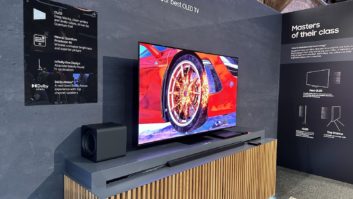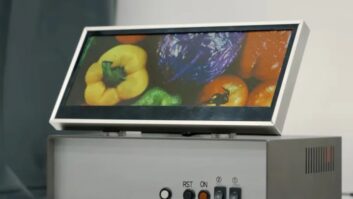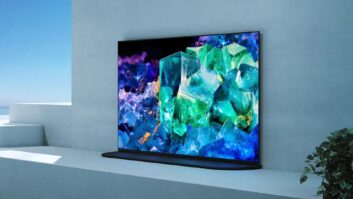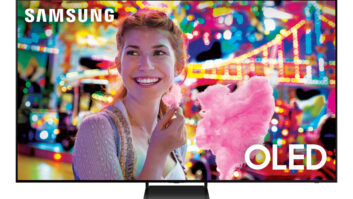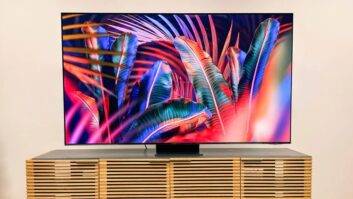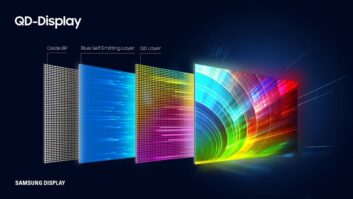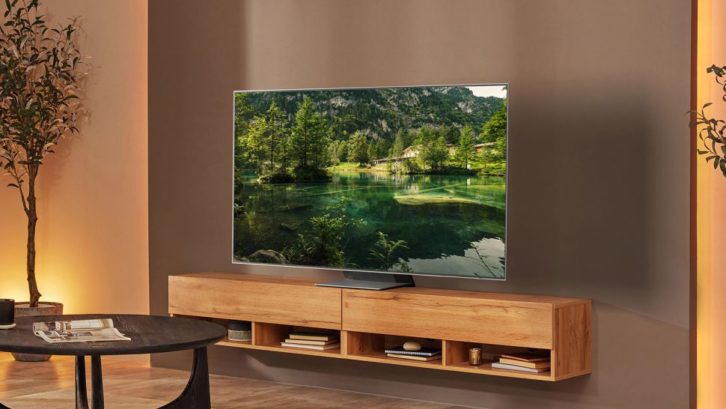
After less hype than you might’ve expected, Samsung’s first TV to use Quantum Dot OLED technology has arrived – here’s our full Samsung S95B review. And despite Samsung pricing it cheaper than its flagship mini-LED TV (the Samsung QN95B) and oddly insisting on just calling it another OLED TV rather than stressing its new Quantum Dot OLED tech, the S95B is pretty damn special.
Brightness is slightly up for both highlights and right across the screen compared with even the best OLED TVs, while local contrast and viewing angles are both superior to what Samsung’s mini-LED TVs can do. Its greatest strength, though, also reminds us of regular OLED TVs’ biggest weakness.
I’m talking about color. The S95B delivers a really remarkably full color range compared to regular OLED screens – especially when it comes to yellows, reds and any very bright colors such as extreme blue skies and neon signs. So much so, at times, that you feel you’re seeing pictures you’ve watched dozens of times before for the first time.
The more evidence of the S95B’s sensational color range I saw while reviewing it, the more I started to think about just how the QD-OLED debutante might be achieving it. And the answer reminded me of maybe regular OLED technology’s biggest limitation. No, not brightness (though that is kind of related), but rather its reliance on the inclusion of a white element in its pixel system.
‘Regular’ OLEDs use a white OLED light source pushed through red, green and blue color-filter sub-pixels – but also have a white sub-pixel. This is known as either RGBW OLED or simply WOLED. This approach evolved partly to reduce costs/enhance brightness, and partly to make it easier to fit the high number of pixels needed for 4K and even 8K OLED TVs into affordable, TV-sized screen areas.
The problem with this approach is that the white light source essentially ‘pollutes’ the purity of the color signal. This isn’t such a problem with relatively dark images, but where an HDR image contains a really bright area of color, such as the examples I gave earlier, the white element can cause colors to lose saturation. Especially in the case of some ‘secondary’ color areas, such as yellows and cyans.
QD-OLED screens don’t have this problem. They use a blue OLED light source, and then use highly efficient green and red Quantum Dot sub-pixels to filter the colors. This gives an RGB structure overall, and interferes less with the brightness, so there’s no need for the extra white element.
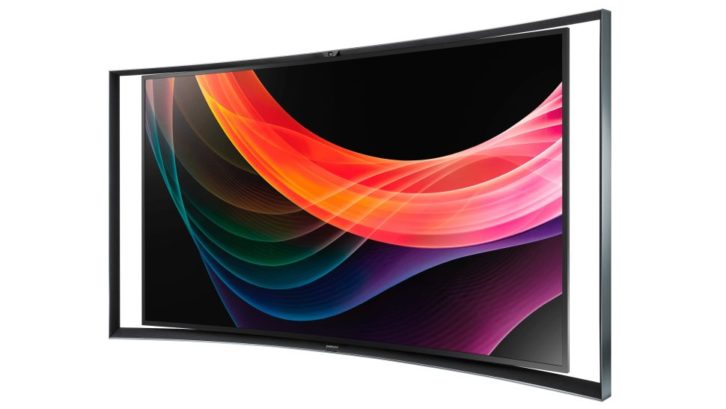
Samsung’s OLED vision finally comes to pass
Those of us who’ve been around long enough to remember when OLED was just a baby will remember that in fact Samsung was involved with it right from the beginning, actually releasing a set: the curved KE55S9C (remember when curved screens were a thing?). However, that early Samsung OLED entrant used what the brand liked to call a ‘true’ RGB OLED design that didn’t contain any white elements.
This 55-inch TV delivered what was widely considered back then to be a reference level of picture quality, but broke the bank with a price tag of £7,000. So as soon as it became obvious that the ‘compromise’ design of RGBW OLED panels from great rival LG would be able to cut OLED TV pricing far faster than Samsung’s true RGB approach could, Samsung pulled the plug on its OLED operation.
This wasn’t (according to multiple Samsung representatives I talked to at the time) because of OLED’s potential issues with screen burn – despite Samsung proceeding to make so much noise about once it had gone full tilt into its LCD operation – but because the company wasn’t willing to ‘compromise’ its RGB approach and didn’t think there was enough of a premium market to support such a puritanical and expensive stance.
Fast forward the best part of a decade and Samsung is back in the OLED TV game. This initially awkward (given how long it has spent attacking OLED) look may well be down in no small part to Samsung deciding that it can no longer afford to miss out on the increasingly popular OLED bandwagon.
However, even though Samsung’s marketing hasn’t pushed the picture quality benefits of QD-OLED as hard as I would have expected, now that I’ve had chance to experience its color benefits in action I’d argue that Samsung’s return to the OLED world is also down to it having found a way to do so while sticking to the ‘no white element’ principles it drew a line in the sand about all those years ago.
And this time, in being able to ditch the white without the results costing the earth, it has more potential to throw a light – literally – on regular RGBW OLED’s bright color challenges.
I should quickly add that I’m not saying that all QD-OLED TVs will by default be better than all RGBW TVs. Color is just one part of a TV’s picture, after all, with overall performance depending on how well a screen and the processing system driving it handles a whole host of other image elements. There’s no doubt, though, that QD OLED turns the color dial up – even if it does so by going back to a principle that’s actually more than a decade old.
This article originally appeared on techradar.com
About the Author
John Archer has been writing about home entertainment technology for more than two decades – an especially impressive feat considering he still claims to only be 35 years old (yeah, right). In that time he’s reviewed hundreds if not thousands of TVs, projectors and speakers, and spent frankly far too long sitting by himself in a dark room.






